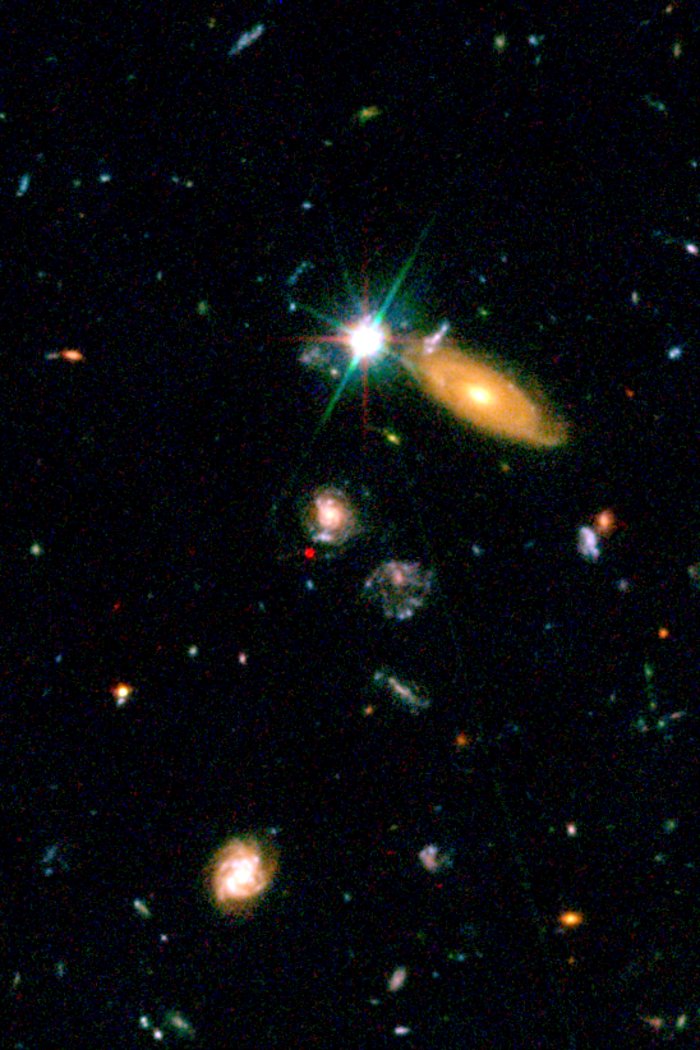SN2002dd in the HDF North - 2002
The red spot is the glow of a very distant supernova captured exploding in the field. The supernova is estimated to be 8 billion light-years away. The supernova appears deep red in this composite image because it was photographed by the ACS at far-red wavelengths. Distant supernovae are used by astronomers to fill in the blank region where the universe's rate of expansion switched from deceleration due to gravity to acceleration due to the repulsive force of 'dark energy.'
Credit:About the Image
About the Object
| Name: | Hubble Deep Field North, SN 2002DD |
| Type: | Early Universe : Star : Evolutionary Stage : Supernova Early Universe : Cosmology : Morphology : Deep Field |
| Distance: | z=0.95 (redshift) |
| Constellation: | Ursa Major |
| Category: | Stars |
Coordinates
| Position (RA): | 12 36 55.62 |
| Position (Dec): | 62° 12' 46.18" |
| Field of view: | 0.46 x 0.69 arcminutes |
| Orientation: | North is 140.1° right of vertical |
Colours & filters
| Band | Wavelength | Telescope |
|---|---|---|
| Optical B |
Hubble Space Telescope
WFPC2 | |
| Optical V |
Hubble Space Telescope
WFPC2 | |
| Infrared I+Z |
Hubble Space Telescope
ACS | |
| Infrared J | 1.1 μm |
Hubble Space Telescope
NICMOS |


